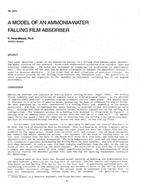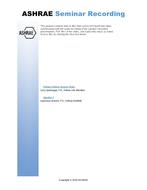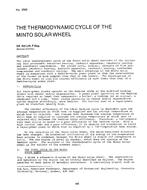In 1968, Roller and Goldman (Ref 12) proposed a physical model for rationally predicting solar heat load on man from the intensities of direct, diffuse, and terrain reflected sunlight, solar angle, and such other factors as the man’s position and orientation to the.sun, his clothing characteristics, and wind speed; the initial predictions for clothed men in the desert were as much as 80% higher than have been measured (Refs 2, 7, 8, 9). However, the model was subsequently modified, using measured solar heat loads on a standing, electrically-heated copper manikin in a tropical fatigue uniform as a guide (Ref 4), and now correctly assesses the amount of direct sunlight falling on the clothing and its heating effect on the man, and provides a more realistic estimate of the effects of the diffuse and reflected sunlight components. These revisions resulted in agreement within 4 watts, average, between the predicted solar heat loadS and those measured on the manikin in 72 separate experiments.
The present paper summarizes the results of a further assessment of the accuracy of the revised model, in this instance with the copper manikin dressed in heavy cold weather clothing (complete cold-wet uniform). A compilation of recommended parameter values for the prediction model, replacing those proposed by Roller and Goldman, is provided for various solar angles for standing, walking, and sitting men dressed in "lightweight" (summer long sleeved shirt and trousers type) and "heavy" (New England winter type) clothing. Finally, a Fortran program has been developed to facilitate the prediction of the various solar heat load components and the total load on nude or clothed men once the solar radiation components have been measured.
Citation: ASHRAE Transactions, Volume 78, Part 1, New Orleans, LA
Product Details
- Published:
- 1972
- Number of Pages:
- 10
- File Size:
- 1 file , 720 KB
- Product Code(s):
- D-NO-2218


